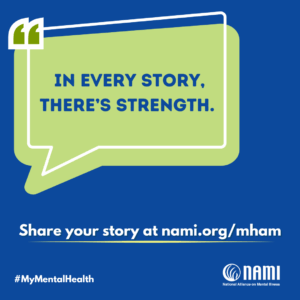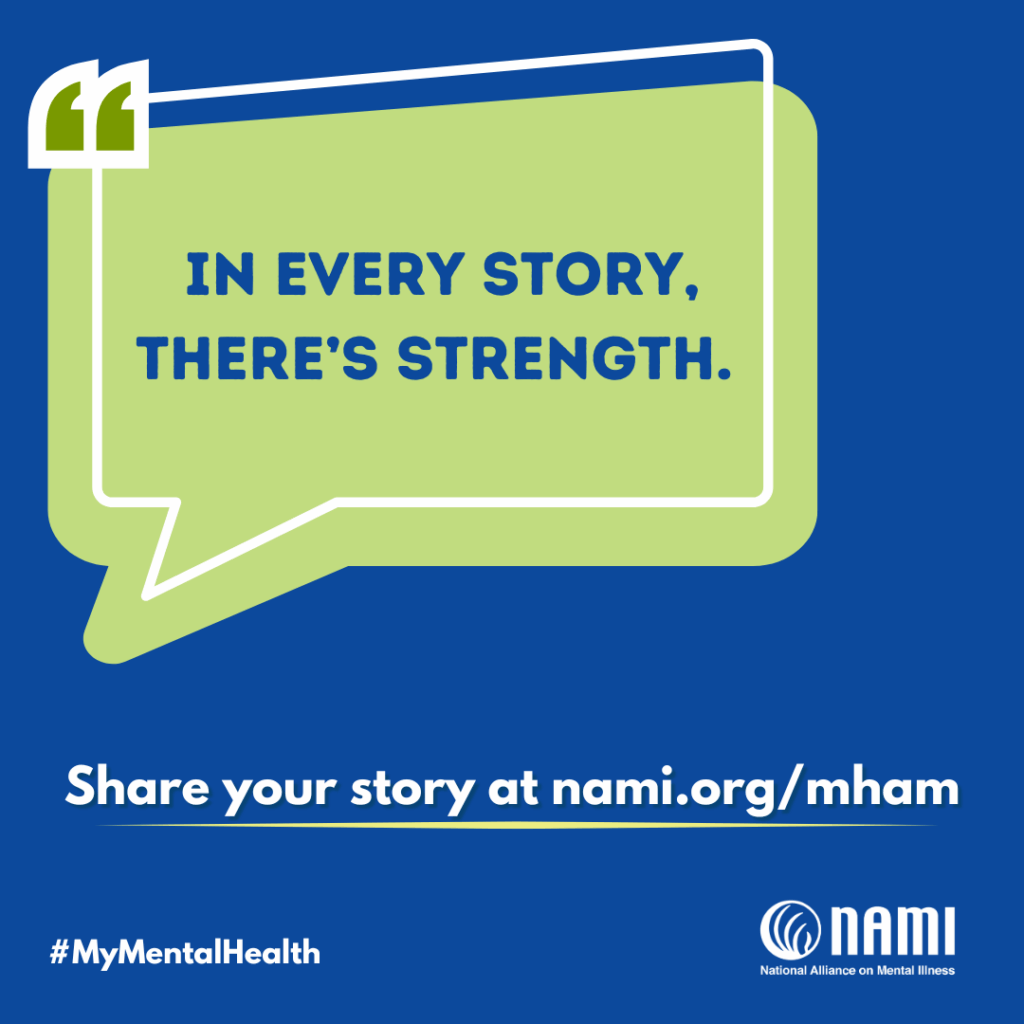America started Mental Health Awareness Month in 1949 and has been observed ever since. It is celebrated through media, local events, and film screenings.
The intern I have this semester asked me this week if I was aware of the ice bucket challenge. I remember this from 2014 to bring awareness to ALS. He let me know that the Ice bucket challenge has returned this year, to raise awareness for mental health.
What struck me about this new challenge was what my intern shared. Covid impacted this generation. Isolation, lack of social activity, uncertainty, and frustration have led to ongoing mental health challenges for these young adults. It provides a background for the origin story of Wade Jefferson, a student at the University of South Carolina.
Mr. Jefferson and a group of college students who lost two friends to suicide, using the hashtag #SpeakYourMIND to raise mental health awareness. The hashtag has already been shared thousands of times, raising hundreds of thousands of pounds for the cause.
The Guardian spoke with Mr. Jefferson about the Mind (Mental Illness Needs Discussion) club he founded at the University of South Carolina. Mr. Jefferson shared, “Participants are encouraged to share educational resources – including self-care tools, ways to offer help, and information to access crisis support – available at activeminds.org,” he said. “Together, we’re not just starting a challenge – we’re creating a new era of mental health.”

NAMI
NAMI, the National Alliance on Mental Illness, is based in Arlington, VA. NAMI advocates to improve the lives of people affected by mental health conditions. From the U.S. Capitol to state legislatures to local city councils, the NAMI Alliance uses the power of lived experience to shape how our country helps people with mental illness.
Millions of people in the U.S. are affected by mental illness each year. It’s important to measure how common mental illness is, to understand its physical, social, and financial impact. This allows us to see that no one is alone. These numbers are also powerful tools for raising public awareness, stigma-busting, and advocating for better health care.
Fast Facts
- 1 in 5 U.S. adults experience mental illness each year
- 1 in 20 U.S. adults experience serious mental illness each year
- 1 in 6 U.S. youth aged 6-17 experience a mental health disorder each year
- 50% of all lifetime mental illness begins by age 14, and 75% by age 24
- Suicide is the 2nd leading cause of death among people aged 10-14
- Millions of people are affected by mental illness each year. Across the country, many people just like you work, perform, create, compete, laugh, love, and inspire every day.
- 22.8% of U.S. adults experienced mental illness in 2021 (57.8 million people). This represents 1 in 5 adults.
- 5.5% of U.S. adults experienced serious mental illness in 2021 (14.1 million people). This represents 1 in 20 adults.
- 16.5% of U.S. youth aged 6-17 experienced a mental health disorder in 2016 (7.7 million people)
- 7.6% of U.S. adults experienced a co-occurring substance use disorder and mental illness in 2021 (19.4 million people)
- Annual prevalence of mental illness among U.S. adults, by demographic group:
- Non-Hispanic Asian: 16.4%
- Non-Hispanic Native Hawaiian or Other Pacific Islander: 18.1%
- Non-Hispanic Black or African American: 21.4%
- Hispanic or Latino: 20.7%
- Non-Hispanic White: 23.9%
- Non-Hispanic American Indian or Alaska Native: 26.6%
- Non-Hispanic mixed/multiracial: 34.9%
- Lesbian, Gay or Bisexual: 50.2%
NAMI confirmed what I learned from my intern. They report that youth and young adults experienced a unique set of challenges during the COVID-19 pandemic—isolation from peers, adapting to virtual learning, and changes to sleep habits and other routines.
We must recognize the significant impact of these experiences on young people’s mental health and the importance of providing the education, care, and support they need. Here are some statistics to substantiate the need for mental health services.
- Among U.S. adolescents (aged 12-17):
- 1 in 6 experienced a major depressive episode (MDE)
- 3 million had serious thoughts of suicide
- 31% increase in mental health-related emergency department visits
- Among U.S. young adults (aged 18-25):
- 1 in 3 experienced a mental illness
- 1 in 10 experienced a serious mental illness
- 3.8 million had serious thoughts of suicide
- 1 in 5 young people report that the pandemic had a significant negative impact on their mental health
- 1 in 10 people under age 18 experience a mental health condition following a COVID-19 diagnosis
- Increased use of alcohol among those who drink:
- Increased use of drugs among those who use:
Resources
Here are some resources for you to have in your toolkit.
- SAMHSA National Helpline: Provides 24/7, confidential treatment referrals and information about mental and/or substance use disorders.
- 988 Suicide & Crisis Lifeline: Offers 24/7 confidential support for people in distress. **There is some talk of Congress reducing funding for the 988 services. Will update you if these services are impacted by reductions.
- FindTreatment.gov: Helps individuals and their families locate treatment facilities for mental and/or substance use disorders.
- Mental Health America:. Offers a comprehensive 2025 Mental Health Month Planning Guide with outreach ideas, communication templates, and activity examples.
- NAMI (National Alliance on Mental Illness):.Provides resources for events, campaign participation, and advocacy efforts.
- SAMHSA (Substance Abuse and Mental Health Services Administration):.Offers a digital toolkit with various resources, including treatment locators and helplines.
- National Institute of Mental Health:. Outlines additional mental health services and information.
Look Out for You
During mental health awareness month, remember to look out for yourself. Here are some suggestions:
1. Prioritize Self-Care:
- Connect with others: Spending time with loved ones can reduce stress and improve mental health.
- Practice mindfulness: Engage in activities like meditation, journaling, or deep breathing to stay present and reduce stress.
- Engage in physical activity: Exercise can boost mood and reduce anxiety and depression.
- Get enough sleep: Prioritize sleep for both mental and physical health, aiming for 7-9 hours per night.
- Eat a balanced diet: Focus on nutrient-rich foods and limit sugary or processed foods.
- Limit alcohol and substance use: Reduce or eliminate alcohol and other substances to improve overall health.
2. Practice Self-Compassion:
- Acknowledge your feelings: It’s okay not to be okay, and it’s important to be kind and understanding towards yourself.
- Challenge negative thoughts: Identify and question negative thoughts that may be impacting your well-being.
- Practice gratitude: Focus on the positive aspects of your life and express gratitude for them.
Count me in as a helper when it comes to sorting your advanced planning. Send me an Email or Book Time with Lynn if you have any questions. For additional information about my work, check out @ The Living Planner or @ The Living Planner.
If you’re up for planning your life’s administrative side, consider my book as a resource. The Living Planner: What to Prepare Now While You Are Living © Check it out HERE.
Quote for the week: “The most beautiful people I’ve known are those who have known trials, have known struggles, have known loss, and have found their way out of the depths,”– Elisabeth Kübler-Ross
One thing at a time❣️ Lynn
#PlanfortheUnplanned #Can’tPredictCanPrepare

